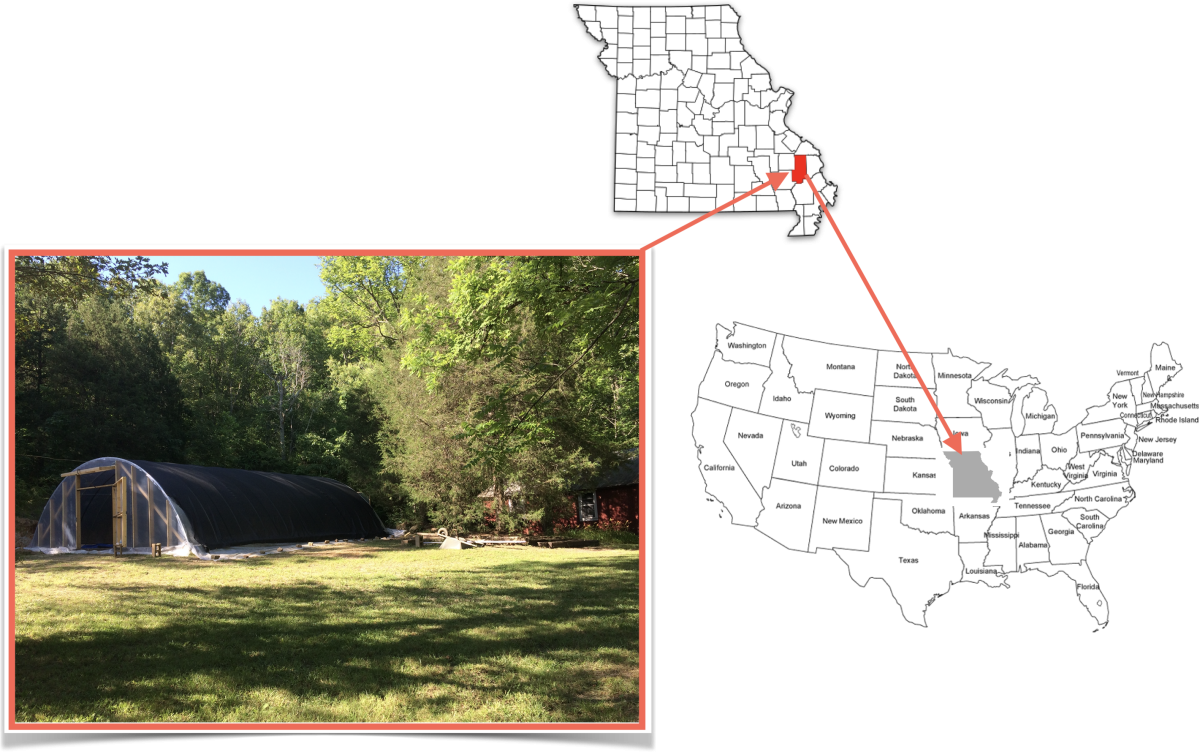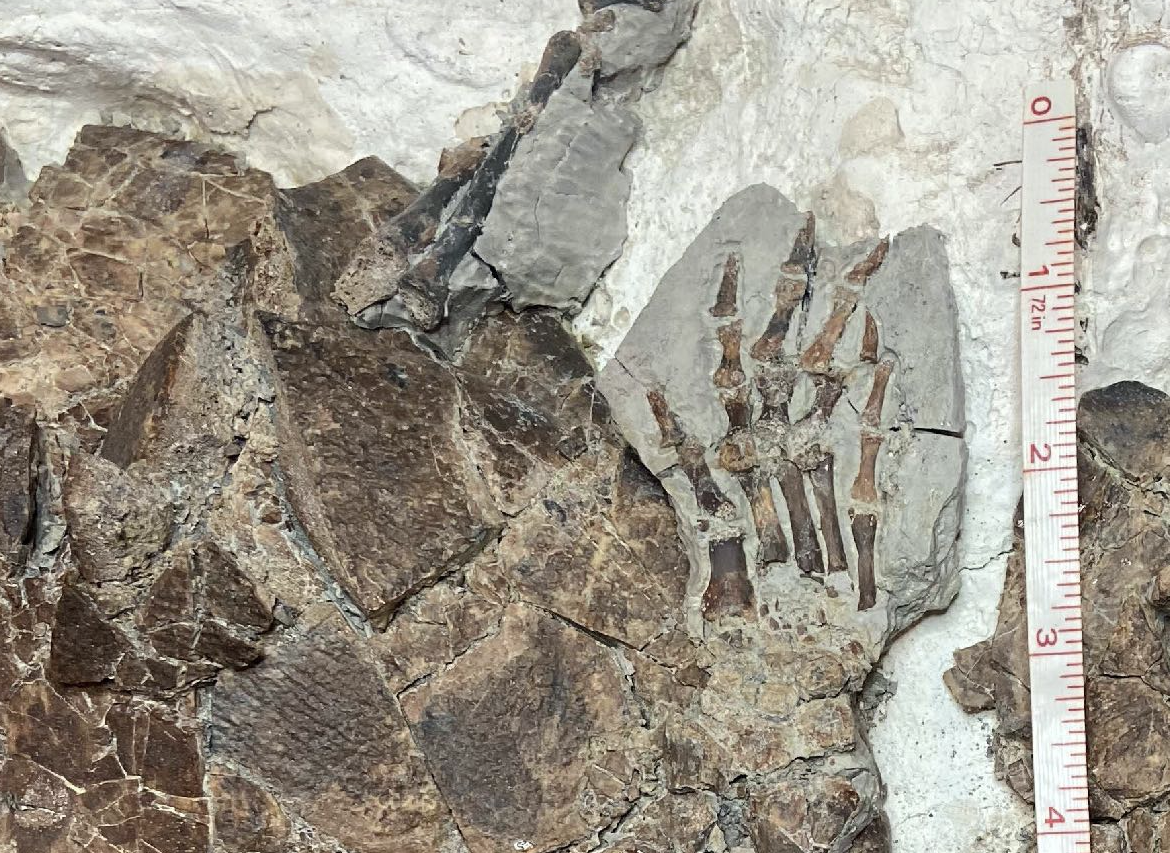The Chronister Dinosaur: Parrosaurus missouriensis

While the western interior is known for its rich fossil record from the Mesozoic including iconic dinosaurs like T. rex and Triceratops, dinosaurs and other terrestrial fossils are much rarer east of the Great Plains. Indeed many midwestern and eastern states have few to no dinosaur fossil at all. For example, Minnesota’s dinosaur record comprises a handful of isolated bones from the Hill Annex Mine in the Iron Range. Missouri is another state with only a single dinosaur locality within its boundaries, but unlike the fragmentary remains recovered in Minnesota and other neighboring states, this site yields dinosaurs and other vertebrate fossil that are remarkably complete.
Missouri’s only dinosaur locality, located in the southeastern part of the state in Bollinger County, was discovered by chance in 1940 on the property of the Chronister family (Figure 1). Shortly after the Chronisters dug a cistern behind their house to trap rainwater, Dan Stewart, a geologist from the Missouri Geological Survey visited their property looking for clay deposits, and was shown a number of ‘cow bones’ collected during the excavation of the cistern. Stewart immediately recognized these to be dinosaur tail bones and sent them to the Smithsonian Institution, where they were described as Parrosaurus missouriensis.

In the 1980’s the Chronister property was bought by a now-retired geology professor to preserve its paleontological heritage, and systematic excavation led by local avocational paleontologist, Guy Darrough, and local volunteers began in the 1990’s. These digs led to the discovery of more fossils including a partial skeleton of a juvenile duckbilled dinosaur, or hadrosaur. Following the collapse of the greenhouse structure protecting the site in 2009 during an ice storm, there was a hiatus in excavations until 2017, when I got involved at the invitation of Darrough. Over the last five years, I have led six digs at the site in collaboration with the Field Museum in Chicago, where I was previously employed, the Ste Genevieve Museum Learning Center in Missouri, and a dedicated team of locals. The last two trips have included graduate students Vik Radermacher and Minyoung Son from our department.
The site is unusual for a number of reasons. The fossils come from an unlithified, wet, smectitic clay that shows little stratification, but contains occasional cobble- to boulder-sized clasts of country rock besides the numerous fossils. The surrounding hills comprise Paleozoic limestones and sandstones, and it is therefore likely that our site represents an infilled graben. Fossils are stacked in distinct layers indicative of separate burial events. For example, we found a layer with over a dozen nearly complete turtles (figure 2) right below the layer producing dinosaur skeletal material. Our excavations have focused on recovering the skeleton of a large Parrosaurus that we first encountered in 2017.

Fortunately, we first found the skull and neck of this animal followed by its forelimbs. Collecting the rest of the specimen proved very challenging, however. As we carefully worked through the clay we were unable to subdivide the body of the dinosaur into smaller sections for removal, and we also had to remove a number of turtles that were wedged under it. Two years and four fieldtrips later, we finally had the body isolated and were able to cover it with a plaster jacket to protect for removal (Figure 3A). Due to the combined weight of the wet clay, the thick plaster casing, and the custom pallet we built to move the fossil, we ended up with a 2500 pound block that required multiple pieces of heavy machinery to be moved (Figure 3B).


After excavation, the fossils need to be prepared – the clay is left to dry and is then carefully removed by trained technicians and the fossil bones are stabilized with adhesives prior to being studied. This is a time-consuming and costly process and we are still awaiting more material to be prepared for study. However, the fossil materials already available to us, are telling an interesting story. Parrosaurus is unusual among North American hadrosaurs in having a large thumb spike on each hand (Figure 4A), a primitive feature lost in other North American hadrosaurs. Coupled with traits in its dentition (Figure 4B) that resemble those of hadrosaurs from around 95 million years ago, it suggests that the Chronister site is much older than previous age estimates that placed it at 75 million year ago. This likely means that the turtles we have recovered also represent two or more new species, as they come from an poorly sampled time bin. As we continue to dig and learn more about the dinosaurs, turtles and fishes from this site, our research efforts will extend to better understanding its depositional setting an paleoenvironment and to better constrain its geological age.


Authored by Dr. Peter Makovicky